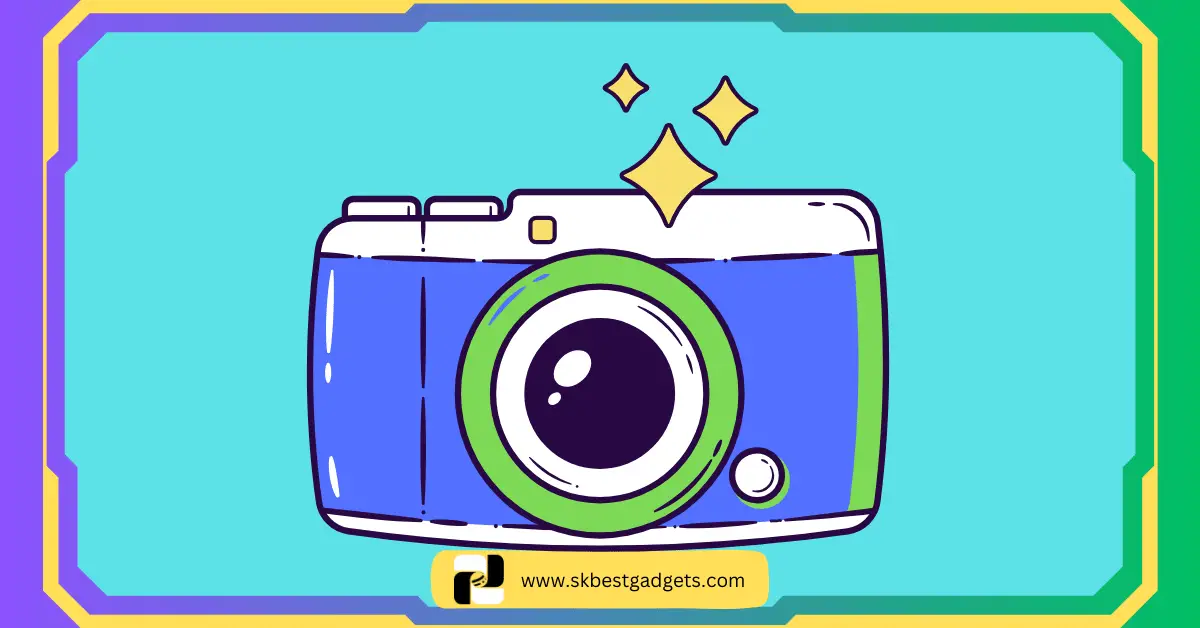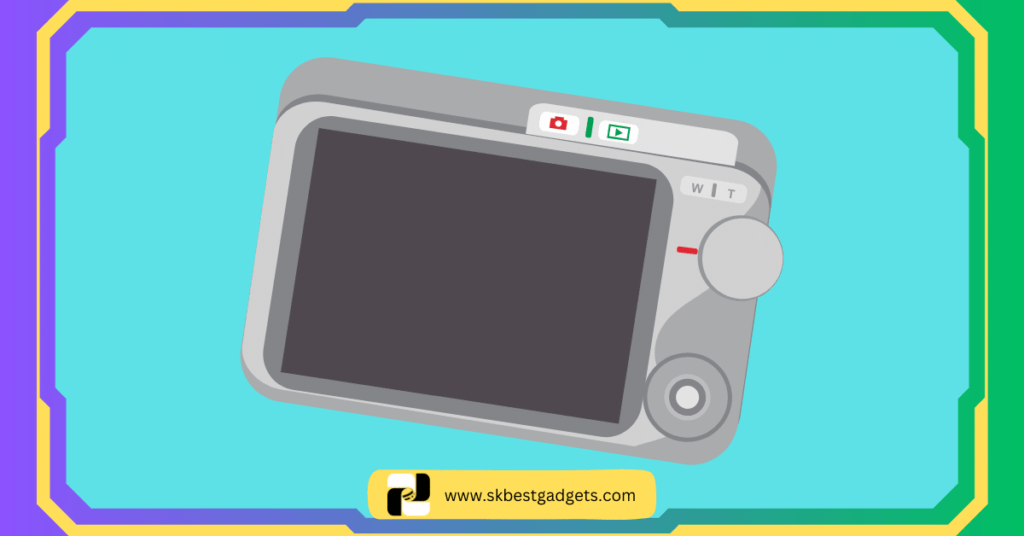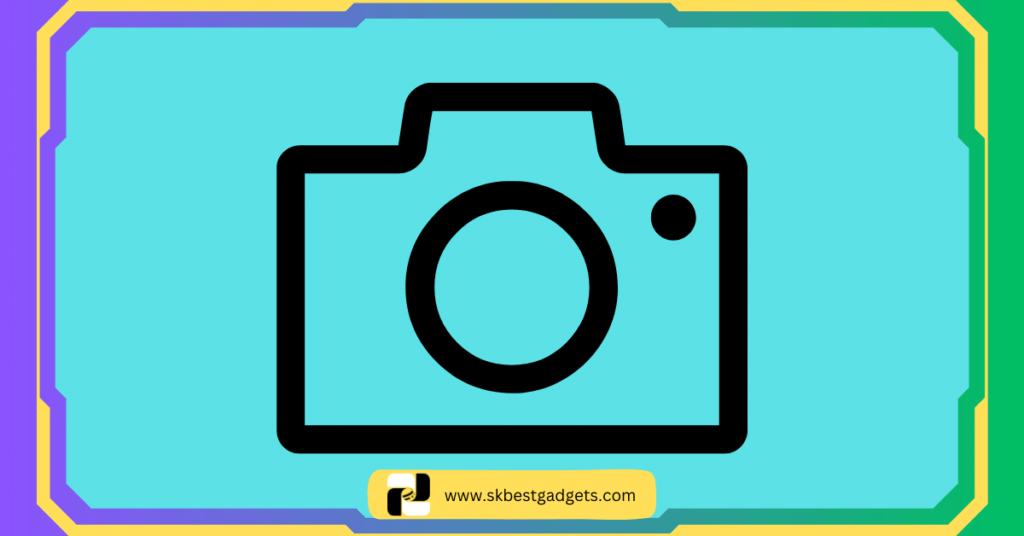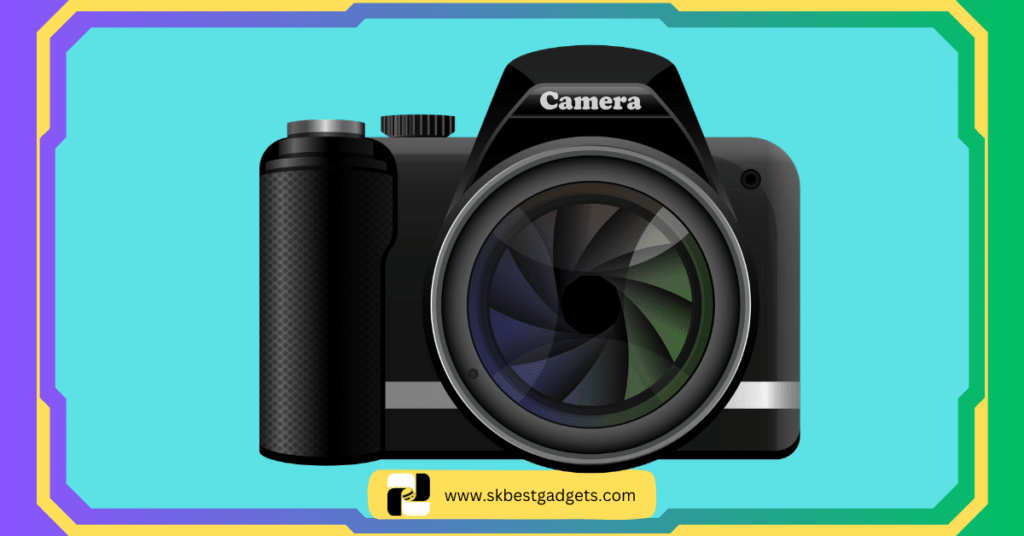What is Digital Camera for Photography? Unlocking the Magic of Digital Photography

Digital cameras have become an essential part of our lives, allowing us to capture memories and share them with others instantly. But with so many different types and features on the market, it can be tough to know where to start.
In this article, we’ll take a look at the basics of digital cameras, from what they are to how to choose the right one for you. We’ll also discuss some tips for taking great photos with your digital camera.
And ultimately your this question will be answered: What is digital camera for photography?
So whether you’re a complete beginner or you’re just looking to learn more about digital cameras, this article is for you.
Key Takeaways
- Choose the right camera type based on your photography goals.
- Understand key camera features like sensors, lenses, and image stabilization.
- Compose shots using the rule of thirds and good lighting.
- Learn your camera’s controls and experiment with settings.
- Safeguard your digital photos with backups and organization.
- Prioritize image quality and consider sensor size and lens quality.
- Editing can enhance photos but don’t overdo it.
- Take your time, focus on details, and use tripods when needed.
- Explore different camera modes for diverse photography situations.
- Embrace photography as an art, practice, and creative journey.
What is the difference between a digital camera for photography and a film camera?
The main difference between a digital camera and a film camera is the way they capture and store images.
Digital cameras use a digital sensor to capture images. This sensor is composed of millions of tiny light-sensitive cells known as pixels.
When light strikes the sensor, it generates an electrical charge that is subsequently converted into a digital signal. This signal is then stored in the camera’s memory card.

On the other hand, film cameras employ a roll of film to capture images. The film consists of a light-sensitive emulsion that reacts to light.
When light interacts with the film, it initiates a chemical reaction that records the image. Subsequently, the film must undergo development in a darkroom to create a negative image, which can then be printed to produce a positive image.
Here is a table summarizing the key differences between digital cameras and film cameras:
| Feature | Digital Camera | Film Camera |
|---|---|---|
| Image capture | Digital sensor | Light-sensitive film |
| Image storage | Memory card | Film |
| Image development | Instant | Chemical process |
| Image editing | Possible | Possible |
| Cost per image | Varies | Varies |
| Durability | More durable | Less durable |
| Weight | Lighter | Heavier |
| Size | Smaller | Larger |
| Availability | Widely available | Less available |
Ultimately, the choice between a digital camera and a film camera depends on your individual needs and preferences. If you seek a camera that is easy to use and provides instant results, then a digital camera is a suitable choice.
However, if you aim for a camera that produces high-quality images with a unique aesthetic, then a film camera is a compelling option.
What are the different types of digital cameras?
There are several types of digital cameras available today, each with unique features and capabilities. Let’s explore these different types:
Digital Single-Lens Reflex (DSLR) Cameras: DSLRs are highly favored among serious photographers due to their exceptional image quality. These cameras feature a large optical viewfinder that provides a precise representation of what the camera sees.
DSLRs also offer the advantage of interchangeable lenses, allowing for creative flexibility. However, they tend to be bulkier and heavier compared to other digital cameras.
Mirrorless Cameras: Mirrorless cameras share many similarities with DSLRs but lack the mirror mechanism that reflects light to the viewfinder. This design choice results in a smaller and lighter camera body.

Mirrorless cameras often come equipped with advanced features like built-in image stabilization, but they typically have a smaller sensor, which may slightly affect image quality.
Point-and-Shoot Cameras: Point-and-shoot cameras are the most basic digital cameras, known for their compact and lightweight design.
These cameras usually have fixed lenses with a set focal length. Despite their simplicity, point-and-shoot cameras offer various features, such as automatic scene modes and image stabilization.
Bridge Cameras: Bridge cameras offer a middle ground between point-and-shoot cameras and DSLRs. They are equipped with a substantial zoom lens, making them ideal for wildlife and travel photography.
Bridge cameras are a great choice for those interested in photography but not ready to invest in a DSLR.
Action Cameras: Designed for extreme conditions, action cameras excel at capturing high-quality video and images.

They are known for their small, rugged build, making them perfect for activities like skiing, snowboarding, and scuba diving. Action cameras often feature wide-angle lenses and can be mounted on various surfaces.
Smartphone Cameras: Smartphone cameras have evolved significantly in recent years. Many smartphones now boast multiple lenses, allowing users to take wide-angle, telephoto, and even macro photos. These cameras often come with features like image stabilization and portrait mode.
The choice of the best digital camera for you depends on your specific needs and budget. For photographers seeking top-notch image quality, DSLRs or mirrorless cameras are ideal.
Read More: https://skbestgadgets.com/how-far-can-a-drone-camera-see/
Those looking for a compact and budget-friendly option may prefer point-and-shoot or bridge cameras. If high-quality video capture is your priority, action cameras are worth considering.
Ultimately, the most effective way to select a digital camera for photography is to try out different models and see which one suits your preferences and requirements best.
What are the features of a good digital camera?
The features of a good digital camera are contingent upon your specific needs and budget. However, some crucial aspects to take into account include:
Image Sensor: The image sensor serves as the core element that captures light and converts it into digital data. Generally, a larger sensor tends to deliver superior image quality, particularly in low-light conditions.

Megapixels: Megapixels denote the number of pixels composing the image sensor. A higher megapixel count provides more image detail, although it’s not the sole determinant of image quality.
Lens: Responsible for focusing light onto the image sensor, a high-quality lens ensures sharp and clear image production.
Optical Zoom: Optical zoom enables you to magnify your subject without compromising image quality. Higher optical zoom capabilities grant greater flexibility in photography.
Aperture: The aperture regulates the amount of light entering the camera. A wider aperture admits more light, proving advantageous in low-light settings.
Shutter Speed: Shutter speed controls the duration the camera’s shutter remains open, influencing the amount of light captured. Faster shutter speeds freeze motion, whereas slower ones allow more light and introduce motion blur.

ISO Sensitivity: ISO sensitivity governs the camera’s light sensitivity. A higher ISO is beneficial in low-light conditions but can introduce noise to your images.
Image Stabilization: Image stabilization mitigates camera shake, reducing the likelihood of blurry images. This feature is especially vital when using long-zoom lenses or shooting in low-light environments.
Viewfinder: A viewfinder offers a real-time view of what the camera sees. An excellent viewfinder is bright, clear, and easily visible in bright sunlight.
LCD Screen: The LCD screen allows for photo and video previews. A quality LCD screen is large, clear, and readily visible in bright sunlight.
Storage: The camera’s storage capacity determines the number of photos and videos you can save. A larger storage capacity offers increased flexibility.
Battery Life: Battery life dictates how long you can use the camera before recharging. Longer battery life grants extended usability.

In addition to these features, numerous other factors should influence your choice of a digital camera, such as the camera type (point-and-shoot, mirrorless, or DSLR), the features that align with your needs, and your budget.
Each of these aspects plays a crucial role in determining the ideal digital camera for your specific requirements.
How do I choose the right digital camera for me?
When it comes to selecting a digital camera, there are several important factors to take into account to make an informed decision. First and foremost, your budget plays a crucial role.
Digital cameras come in a wide price range, from a few hundred dollars to several thousand dollars. Therefore, it is imperative to establish a budget before embarking on your camera shopping journey to avoid overspending.
Next, you need to consider your specific needs and purposes for the camera. If you intend to capture casual snapshots of family and friends, a basic point-and-shoot camera may suffice.
However, if you are a photography enthusiast seeking high-quality images, investing in a more advanced and expensive camera becomes necessary.

The type of camera is another critical aspect to contemplate. Digital cameras can be categorized into three main types: point-and-shoot cameras, mirrorless cameras, and DSLR cameras.
Point-and-shoot cameras are user-friendly and suitable for beginners, while mirrorless cameras offer greater control over your photography. DSLR cameras are the most advanced, equipped with extensive features and controls.
Moreover, it’s essential to identify the specific features that matter most to you in a camera. Are you interested in a camera with powerful zoom capabilities, fast autofocus, or a high-resolution sensor? Once you’ve determined your feature preferences, you can begin narrowing down your options.
Consider the size and weight of the camera as well. If you plan to carry your camera with you regularly, opting for a compact and lightweight model is advisable.

Image quality is paramount in digital cameras and depends on various factors, including the sensor’s resolution, lens quality, and the camera’s processing power. These elements collectively contribute to the overall image quality.
Moving on to the crucial specifications to weigh when purchasing a digital camera:
- Resolution: The resolution, typically measured in megapixels, determines a camera’s ability to capture detail. Higher megapixels can provide more detailed photos, but image quality also hinges on the lens and processing power.
- Lens: The lens plays a pivotal role in focusing light onto the sensor and significantly influences image quality. A high-quality lens is essential for clear and sharp images.
- Aperture: The aperture, represented by the f-number, regulates the amount of light entering the camera. A wider aperture (lower f-number) permits more light, aiding in low-light conditions, but it results in a shallower depth of field.
- ISO Sensitivity: ISO sensitivity affects the camera’s capability to work in low-light conditions. A higher ISO sensitivity allows for better low-light performance but may introduce noise into photos.
- Image Stabilization: Image stabilization helps counteract camera shake, preventing blurry photos. It can be integrated into the camera body or the lens.

Once you’ve contemplated these factors comprehensively, you will be better equipped to choose the digital camera that best suits your requirements.
For further guidance in your decision-making process, here are some additional tips:
- Read Reviews: Perusing reviews by other photographers can offer valuable insights into a camera’s performance and user experience.
- Visit Camera Stores: A visit to a camera store enables you to physically handle different camera models, gaining a sense of their ergonomics and how they capture photos.
- Seek Sales Staff Assistance: Don’t hesitate to consult the store’s sales staff for expert guidance. They can assist you in finding the camera that aligns perfectly with your needs and preferences.
How do I use a digital camera?
Using a digital camera involves several fundamental steps to ensure the best results. Here’s a breakdown of these steps for better understanding:
Prepare Your Camera Before you start capturing memories, it’s essential to prepare your digital camera. Begin by charging the camera’s battery to ensure it has enough power to last through your photo session.
Additionally, insert a memory card into the camera. The memory card is crucial for storing all the photos you’ll take.

Familiarize Yourself with Basic Controls Every digital camera comes with its own set of controls, so take some time to become familiar with them. Common controls include the shutter button for taking photos, the zoom button for adjusting the focal length, and the menu button for navigating camera settings.
Select the Appropriate Shooting Mode Digital cameras offer various shooting modes, each tailored to specific photography situations.
For instance, the portrait mode is designed for capturing people, while the landscape mode is ideal for scenic shots. Choose the mode that best suits your subject and the type of photo you want to create.
Compose Your Shot Composing a shot involves deciding what elements to include in your photo and how to arrange them within the frame.
Take your time to compose your shot, ensuring that everything is positioned as you desire. Composition plays a crucial role in the final image’s aesthetics.

Focus the Camera Proper focus is essential to ensure your subject is sharp and clear. Most digital cameras come with autofocus features that automatically adjust the focus.
However, you might need to manually focus the camera in certain situations, such as close-up shots or when autofocus isn’t working correctly.
Capture the Photo When you’re satisfied with the composition and focus, press the shutter button to take the photo. Ensure you have a steady hand to avoid camera shake, which can result in blurry images.
Review Your Photos After taking a photo, you can review it on the camera’s LCD screen. This allows you to check if the image is in focus and if the exposure settings are correct. Reviewing your photos on-site helps you identify any potential issues and make adjustments if necessary.
In addition to the basic steps, here are some valuable tips for enhancing your digital photography experience:
Use a Tripod in Low-Light Conditions When shooting in low-light situations, a tripod can stabilize your camera, reducing the risk of blurry photos caused by shaky hands.
Experiment with Different Settings Don’t hesitate to explore various camera settings to understand how they impact your photos. Experimentation is a great way to learn and improve your photography skills.
Learn About Composition Composition is the art of arranging elements within the frame to create visually appealing images. Study composition techniques such as the rule of thirds, leading lines, and framing to enhance the quality of your photos.

Take Your Time Photography is an art, and rushing through the process can lead to missed opportunities and less satisfying results.
Take your time to compose your shots, adjust settings, and ensure you’re content with each photograph you capture. Patience often leads to better outcomes in photography.
How do I store and manage my digital photos?
Now let me give you some of the tips to store and manage your digital photos. Here are some tips on how to store and manage your digital photos:
Store Your Photos in Multiple Locations: To safeguard your photos against hard drive failures or disasters, consider storing them in multiple locations. You can utilize an external hard drive, a cloud storage service, or both.
Organize Your Photos: Ease of access is crucial. Organize your photos by date, event, or other criteria. You can achieve this by using photo management software or by creating folders on your computer.

Regularly Back Up Your Photos: Ensure the safety of your photos by establishing a routine for backups. You can back up your photos to an external hard drive, a cloud storage service, or both.
Compress Your Photos: To save storage space on your devices, consider compressing your photos. There are various photo compression software programs available that can help reduce file sizes.
Tag Your Photos: Improve searchability by tagging your photos with keywords or subjects. Many photo management software programs offer features for tagging.
Delete Unwanted Photos: Keep your photo library organized and manageable by periodically removing unwanted photos, either from your computer or cloud storage service.
Now, let’s explore some of the most popular ways to store digital photos:
- External Hard Drives: These are a cost-effective option for storing digital photos. They offer ample storage capacity but are vulnerable to damage, so regular backups are essential.
- Cloud Storage Services: Convenient and accessible from anywhere with an internet connection, cloud storage services are a popular choice. However, they can be costly, especially for extra storage space.
- CDs or DVDs: While less common, CDs and DVDs can store digital photos. They are less durable and have limited storage capacity compared to other options.
- Printed Photos: Traditional printed photos remain an option but consume physical space and are susceptible to damage over time.

The ideal storage method for your digital photos depends on your specific needs and budget. If you have a large photo collection and require remote access, a cloud storage service might be best. On a tighter budget with fewer photos to store, an external hard drive could be a more economical choice.
Tips for taking great digital photos with a digital camera
Now let me give you my tips for taking great digital photos with a digital camera. Here are some tips for taking great digital photos with a digital camera:
Learn your camera: The most important tip is to familiarize yourself with your camera’s controls and features. Take the time to read the manual, practice with some test shots, and experiment with different settings.
Use the right settings: Your camera settings significantly impact the exposure, color, and sharpness of your photos. Experiment with various settings to discover what works best for your style.
Pay attention to the light: The quality of light plays a crucial role in photography. Whenever possible, opt for natural light and avoid harsh shadows or direct sunlight when shooting.

Use the rule of thirds: Apply the rule of thirds to enhance your photo composition. Divide the frame into thirds both horizontally and vertically, positioning your subject at the intersection of these lines.
Get close to your subject: To make your photos more impactful, get physically closer to your subject, allowing you to fill the frame with your subject matter.
Use a tripod: Steady your camera with a tripod, especially in low light or when working with a slow shutter speed, to prevent blurry photos.
Edit your photos: After capturing your shots, consider editing them to refine exposure, color, and contrast. Numerous free and paid photo editing software options are available.
Now, here are three additional tips to elevate your photography:
- Learn to hold your camera properly: Prevent blurry photos by holding your camera with both hands and keeping it level.
- Start shooting in RAW: Capture images in RAW format for more control over the final appearance of your photos during post-processing.
- Understand the exposure triangle: Familiarize yourself with the aperture, shutter speed, and ISO settings, as they work together to control your photo’s exposure.
Finally, for a more professional touch to your digital photos, consider these additional tips:
- Choose the suitable composition: Compose your photos thoughtfully, arranging elements within the frame to create visually appealing and storytelling images.
- Use leading lines: Incorporate natural or man-made leading lines in your shots to guide the viewer’s eye into the photo.
- Pay attention to the background: Ensure the background complements your subject, avoiding distractions and clutter that may detract from the impact of your photo.
- Edit your photos carefully: While post-processing can enhance exposure, color, and contrast, maintain a subtle touch to preserve the original image’s essence.

By following these tips and gradually honing your skills, you’ll be well on your way to capturing exceptional digital photos.
Important FAQs
What are the advantages of using a digital camera over a film camera?
How do I choose the right digital camera for my needs?
What are some key features to look for in a digital camera?
How do I improve my photography skills with a digital camera?
Is it necessary to edit digital photos after taking them?
What is the importance of using a tripod in photography?
How can I choose a suitable composition for my photos?
Can I capture high-quality photos with a smartphone camera?
Final Thoughts
In a nutshell, getting the hang of digital cameras isn’t just about mastering the technical stuff; it’s also about embracing the endless opportunities they bring to the table.
Whether you’re a budding photographer aiming to capture life’s moments with finesse or simply on the lookout for a hassle-free way to document your adventures, there’s a digital camera out there that’s tailor-made for you.
We’ve taken a deep dive into the basics, from the striking differences between digital and film cameras to the vast array of options at your fingertips today.
We’ve explored the standout features that set digital cameras apart, helping you make an informed decision. Plus, we’ve dished out some must-know tips to fuel your creativity and snap those unforgettable shots.
But hey, this journey is far from over – it’s just the start of your photographic escapade! We wholeheartedly encourage you to grab your camera, get experimental, and dive headfirst into the world of photography.
Share your experiences, throw those burning questions out there, and be an active part of our vibrant photography community. Your unique perspective holds weight, and your voice has the power to inspire others.
So, come on in and be a part of the conversation. Share your thoughts, spill the beans about your adventures, and don’t hesitate to toss your queries into the comments below. Let’s build a close-knit community of photography enthusiasts who learn, grow, and create together.
And if you’ve found this article helpful, don’t keep it a secret – spread the word to your friends and fellow photography buffs. Together, we can capture the world one click at a time!
Watch This Video:
Read More:
- Highest Rated Dishwasher in 2023 (A Comprehensive Buying Guide)
- Best Reading Light To Not Disturb Partner (2023)
- How Much Electricity Does a Clothes Dryer Use? Top Tips & Insights (2023)
What are Projectors? Unlocking the 5 Secrets of Projectors: What You Didn’t Know!
What’s the deal with projectors? 📽️✨ Uncover the 5 secrets you didn’t know in this article. Get ready for a whole new level of movie nights and presentations! 🎥🍿







